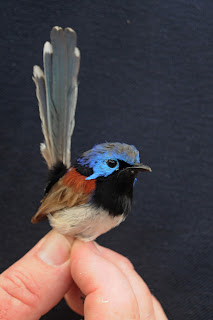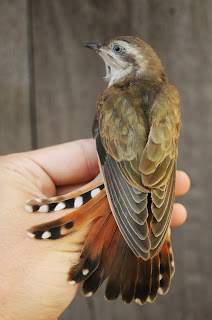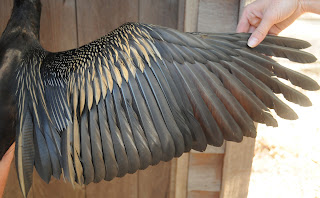The highlights of these sessions included three Little Grassbirds, which we were very lucky to catch in the reed bed, as it won't be long before we can't access that site anymore when it fills with water coming in to winter.
 |
| A new Little Grassbird banded in April Photo: Nick Hart |
 |
| A new and retrapped Little Grassbird side-by-side. Only subtle differences in plumage were visible, with interesting differences in throat striations to be studied further. Photo: Nick Hart |
 |
| The Weebill - Australia's smallest bird Photo: Nick Hart |
Banding summary
9th April 2016 - Species, new, (retrap)
Brown Honeyeater 1 (1)
Red Wattlebird 3 (1)
Sacred Kingfisher (1)
Silvereye 4 (3)
Striated Pardalote 4
Weebill 1
Western Gerygone 1
Willie Wagtail 1 (1)
Total 16 + (6) = 22
16th April 2016
Australian Reed-warbler 1
Little Grassbird 2 (1)
Pacific Black Duck 1
Red Wattlebird 1
Rufous Whistler (2)
Silvereye 24 (6)
Striated Pardalote 2
Weebill (1)
Western Gerygone 2
Yellow-rumped Thornbill 1
Total 34 + (10) = 44
23rd April 2016
Brown Honeyeater 1
Silvereye 4 (3)
Total 5 +
(3) = 8
Lizzy Joyce























